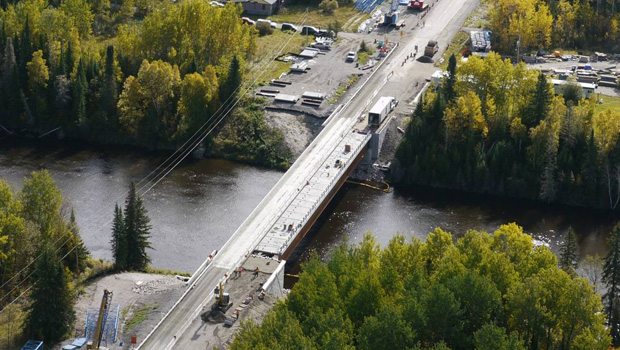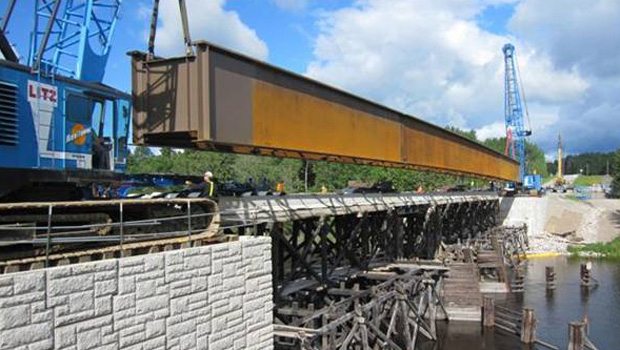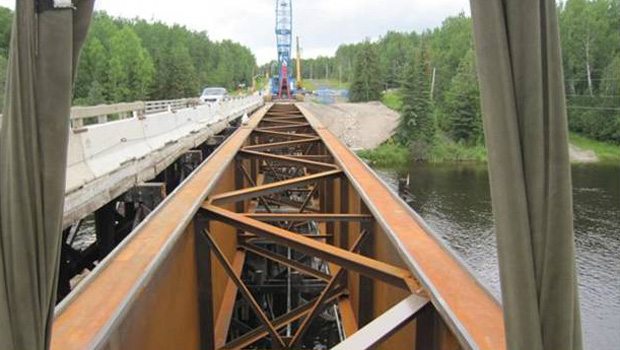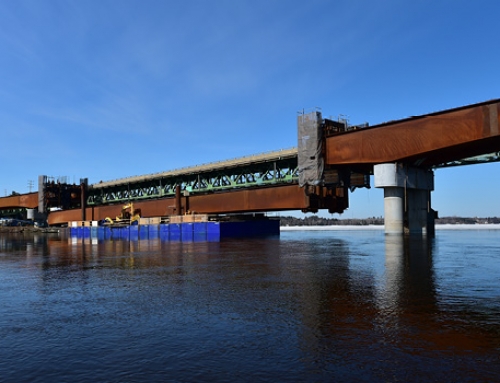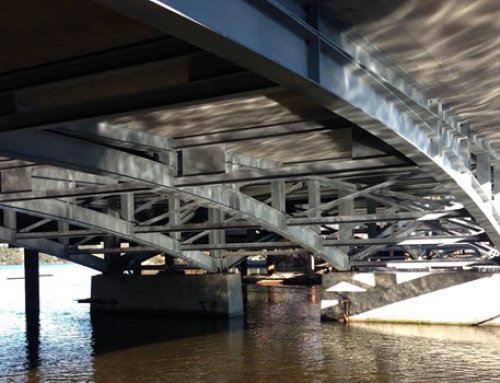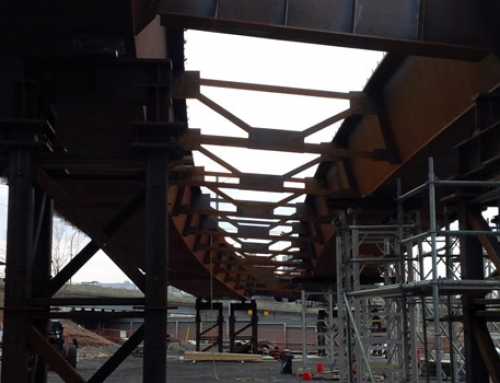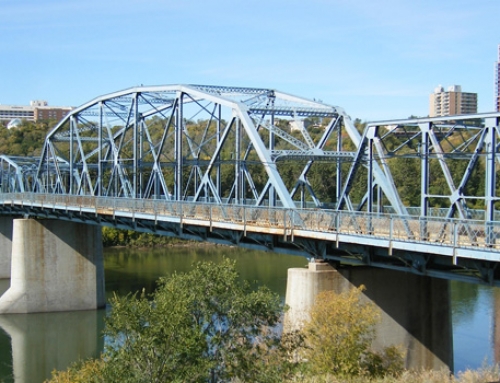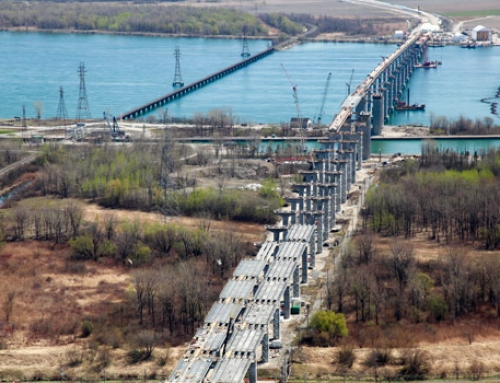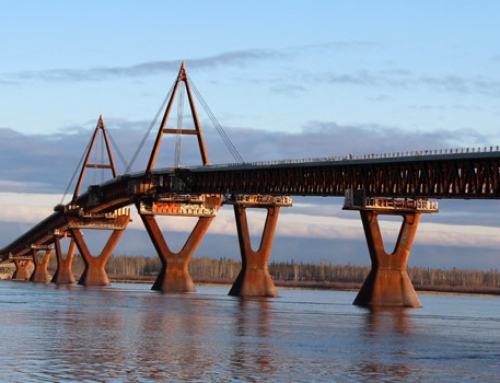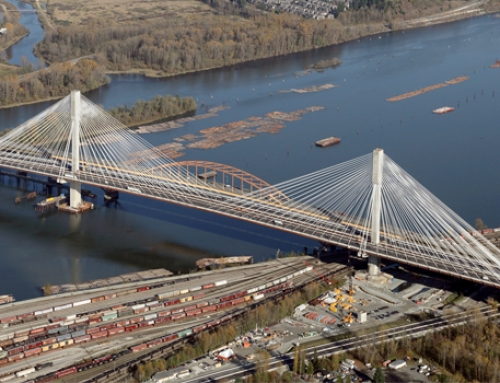Project Description
Key features of the Chukuni River Bridge design included:
- The use of a single span structure resulted in the elimination of pier construction in the water. This minimized environmental and approval impacts and also reduced the construction cost and schedule;
- The replacement of the bridge on the existing alignment avoided unnecessary road works, property acquisition and mitigates environmental impacts;
- The use of staged construction while maintaining one lane of traffic avoided the need for a temporary modular bridge and associated costs. Construction traffic was maintained in a one lane operation using temporary traffic signals;
- The design incorporates the use of semi-integral abutment construction. The bridge has no expansion joints and the deck is constructed continuously over the abutments with movement accommodated at the end of the approach slab panels.
The design incorporated the use of full depth prefabricated precast concrete panels for the deck with GFRP reinforcement. This is an important Northwestern Region initiative to address the Region’s serious concerns with reinforcing steel corrosion and the historically variable quality of site-batched concrete on projects in remote locations. The use of a completely prefabricated superstructure also enabled the construction of the bridge to be accelerated.
The total tender price of the project was $9.5 million, which was more than $4 million less than an alternative multi-span structure that required difficult in-water pier construction .
Project Team
Owner: Ministry of Transportation Ontario
Structural Engineer: McCormick Rankin Corporation
Project Manager / General Contractor: Bruno’s Contracting (Thunder Bay Limited)
Fabricator: Capitol Welding Corporation
Detailer: Capitol Welding Corporation

